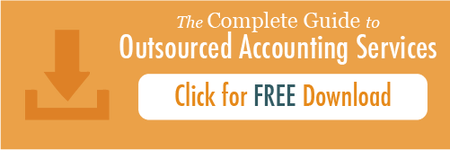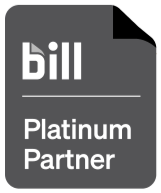We spend a lot of time helping small business owners get their finances cleaned up and in order. Over the years, we've seen many of the same accounting mistakes occurring over and over again. QuickBooks can be incredibly helpful--but only if you're taking full advantage of all of its capabilites and you know how to set it up correctly. Here's a list of the most common QuickBooks problems business owners run into:
Common QuickBooks Problems
01. Your Chart of Accounts is a Mess
To clean things up, we suggest you group similar accounts together in parent-child relationships. Try to keep it as simple as possible. Too many accounts is a bad sign. When you enter data, make sure to enter it in the lowest level account rather than in the parent account.
02. Your "Items" List is Jumbled
QuickBooks defines the product(s) you sell as "items." Over the years, it's easy to just throw inventory anywhere and forget to keep amounts updated. Here's a quick list of ways to clean up your items list:
- Deactivate any items you no longer sell.
- Make sure each item is correctly labeled "inventory," "non-inventory," etc.
- Double-check the amount in stock.
- Make sure you keep the costs for each item updated.
- Tag each item correctly with the proper revenue and cost accounts.
Download our pricing guide here.
03. You're Not Using the Purchase Order System
Why not? Well, you're not alone. Many business owners fail to use this incredibly helpful system. Our suggestions:
- Create a PO every time you buy product from a vendor.
- Make sure you receive products against a PO.
- If you look at your PO report, you shouldn't have entries over 1 year old.
04. You're Not Reconciling Your Bank Account
This isn't about manually entering every transaction into QuickBooks. Rather, it's about monitoring the transactions to make sure they're in the right place for the right amounts.
- Open the reconciliation module.
- Go through each transaction (monthly).
- Make sure each transaction hit the right account and
- That it cleared the bank.
- Also, make sure nothing was missed or double-booked.
05. You're Not Reconciling Your Credit Cards
Make sure you're using the reconciliation module for credit cards, loans, and other balance sheet accounts as well. This will solidify your financial statements and give you a better overall accounting of the health of your business.
06. Incorrectly Applying Deposits to Invoices
When you open your accounts receivable again report, and you see customer balances with negatives that shouldn't be there, you know you're probably applying deposits incorrectly to invoices.
Every time you get paid by a customer, you should be able to receive that payment against an open invoice.
07. Incorrectly Applying Payments to Bills
If you know you've paid a vendor, but the accounts payable aging report says you still owe that vendor, then you're obviously applying payments incorrectly to your bills.
08. Misusing the Undeposited Funds Account
If you're receiving payments from customers, but your cash account isn't increasing on your financial reports, then you're probably using undeposited funds incorrectly.
When you receive a customer payment, open up the deposit module, batch checks together that you're taking to the bank, and record them as one single deposit in the software.
09. Your Report Settings Are Incorrect
Make sure your report settings are set to your expectations. Do you want cash or accrual reports?
Cash Reports: show you the cash in/out flow of transactions within your company.
Accrual Reports: show you the overall performance of your company.
10. Your Preferences Aren't Set Up Correctly
Here's a list of things you might want to adjust in your preferences:
- Email templates
- Finance charges for late customer payments
- Reporting options
- Default bank accounts for paying bills, receiving checks, etc.
11. Forgetting to Lock a Closed Period
When you close out a month or any period, make sure to lock it so that no one can go back and mess with the numbers.
12. You Haven't Created User Roles, Permissions and Passwords
If there are other people working in QuickBooks within your company, you'll want to give them each individual user logins, permissions, roles and passwords. This will give you more control and transparency about what happens within your books.
13. You're Deleting Transactions
QuickBooks transactions are all linked together--if you delete one transaction, you're changing other transactions that were linked to it. Before you delete a transaction, check with your accountant.
Want more help with QuickBooks? Talk with one of our accountants.














.png)




